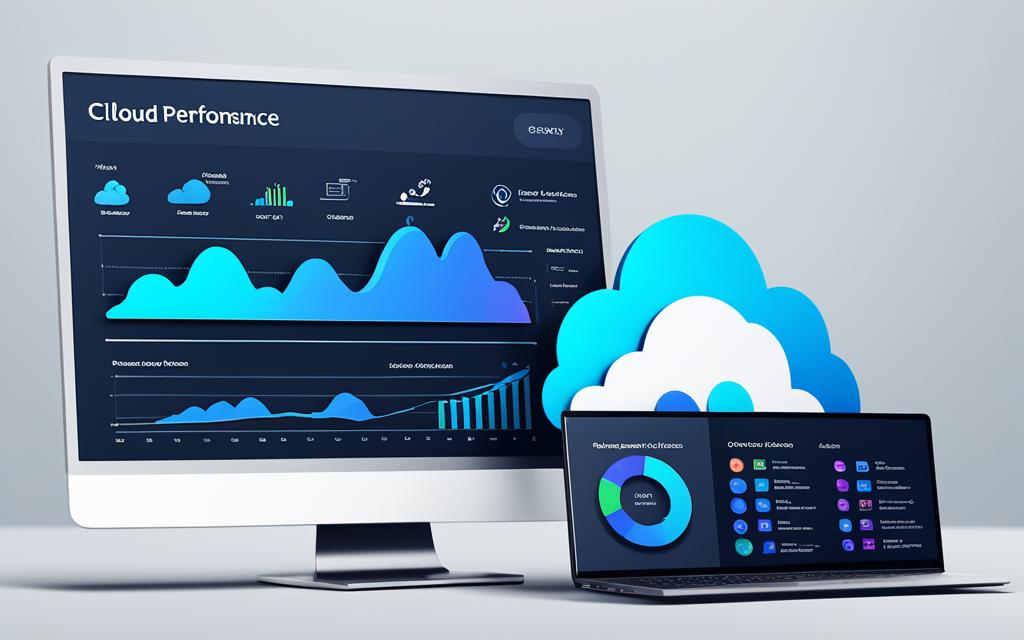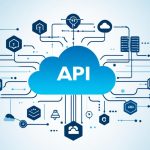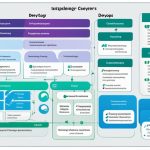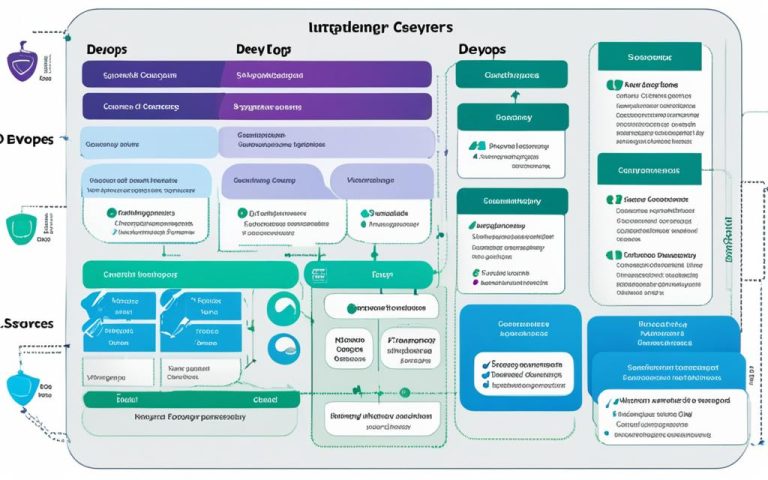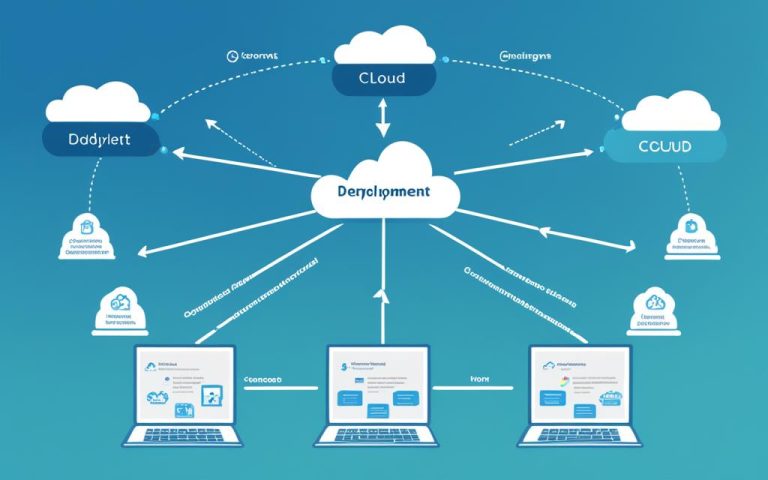Cloud performance tools are indispensable for organizations looking to enhance their cloud operations, achieve peak efficiency, and optimize their cloud infrastructure. In a rapidly evolving digital landscape, businesses rely heavily on cloud computing to drive their operations, making it imperative to have the right tools in place to monitor and optimize their cloud performance.
To achieve optimal cloud performance, organizations need to focus on various aspects of their cloud infrastructure, including resource usage, cost management, and future budgeting. This is where cloud performance tools play a crucial role, providing the necessary visibility and insights to streamline operations and maximize efficiency.
One key area that requires attention is cloud cost management. Effective cost management is essential to ensure that resources are allocated efficiently, unnecessary expenses are identified and eliminated, and future cloud costs are projected accurately for better budgeting. By leveraging the right cloud cost management tools, businesses can gain granular visibility into their cloud resource usage, allocate costs to responsible teams, and make informed decisions to optimize their cloud operations.
While some cloud vendors offer built-in cost management services, organizations can benefit from using stand-alone cost management tools that offer more comprehensive features and integrate with multiple cloud platforms. These tools provide a holistic view of cloud usage, offer advanced cost allocation functionalities, and even provide recommendations for cost-saving measures.
With the increasing need for cost containment and resource optimization, organizations are recognizing the value of cloud cost management tools in ensuring peak efficiency in their cloud infrastructure. By leveraging these tools, businesses can achieve better control over their cloud operations, maximize resource allocation, and ultimately drive cost-effective cloud performance.
Anodot
Anodot is a collection of cloud monitoring tools that offer comprehensive features for tracking data flow, conducting cost analysis, and optimizing resources. With Anodot, organizations can not only monitor the flow of data through different services and applications but also analyze the associated costs to optimize resource allocation.
Key Features:
- Data Flow Tracking: Anodot allows organizations to track the flow of data through various microservices and API calls, providing valuable insights into data dependencies and potential bottlenecks.
- Cost Analysis: The platform offers cost analysis features that help organizations determine the cost of running specific microservices or APIs during different demand periods. By identifying expensive workloads, Anodot enables organizations to optimize resource allocation and eliminate unnecessary expenses.
- Resource Optimization: Anodot’s resource optimization capabilities enable organizations to identify underutilized resources and make informed decisions for cost optimization. By pruning unnecessary resources, organizations can achieve cost efficiency without compromising performance.
- Integration: Anodot seamlessly integrates with broader monitoring systems, enhancing visibility and providing a better customer experience. It can also be used as a white-label platform for integration and reselling purposes.
By leveraging Anodot’s cloud monitoring tools, organizations can gain valuable insights into data flow, analyze costs for resource optimization, and ensure efficient cloud operations.
Cisco’s AppDynamics
Cisco’s AppDynamics, formerly known as Replex, is a powerful tool that focuses on container management in a Kubernetes environment. It offers cost tracking and reporting features, allowing organizations to charge back costs to the responsible teams and gain better cost control. With an integrated machine learning engine, AppDynamics leverages historical data to generate efficient deployment plans, optimizing resource allocation and ensuring cost-effectiveness.
One of the standout features of AppDynamics is its policy control layer, which enables organizations to set granular restrictions on resource access. By implementing policies, organizations can ensure compliance and security while managing their containerized environments. AppDynamics seamlessly integrates cost management with application monitoring, providing a comprehensive solution for optimizing resource allocation and driving cost-effective deployments.
By leveraging machine learning and policy control, Cisco’s AppDynamics empowers organizations to achieve greater efficiency and cost savings in their containerized environments. It offers enhanced visibility into resource allocation, helping teams make data-driven decisions for optimized performance and cost management.
Key Features of Cisco’s AppDynamics:
- Container management in a Kubernetes environment
- Cost tracking and reporting for better cost control
- Machine learning engine for efficient deployment plans
- Policy control layer for granular resource access restrictions
- Integration with application monitoring for optimized resource allocation
“With AppDynamics, organizations can effectively manage and optimize their containerized environments, ensuring cost-efficiency and performance excellence.” – AppDynamics User testimonial
Cloudability
Cloudability, a tool by Apptio, is a comprehensive solution for managing IT shops and handling cloud costs effectively. With its powerful features, organizations can gain better control over their cloud expenses, allocate resources wisely, and predict future usage, ensuring optimal cost management.
Cloudability breaks down cloud instances and allocates them to different teams, enabling IT shop management and creating a clear cost allocation structure. Teams can easily monitor and manage their cloud costs, leading to improved accountability and better cost control.
The tool’s True Cost Explorer provides pivotable charts, allowing organizations to analyze and establish accurate cost plans for their cloud infrastructure. This feature helps in identifying trends, forecasting future costs, and making informed decisions about future purchasing, such as reserved instances.
To enhance planning and monitoring capabilities, Cloudability integrates seamlessly with ticketing and tracking tools. This integration streamlines workflows, improves collaboration, and provides a holistic view of cloud costs across the organization.
With Cloudability, organizations can effectively manage their IT shops, allocate upcoming workloads efficiently, and make data-driven decisions for future usage prediction. By leveraging its robust features, organizations can optimize their cloud costs and ensure cost-effective operations.
Key Features of Cloudability:
- Centralized cost management and allocation
- Accurate cost planning and future usage prediction
- Seamless integration with ticketing and tracking tools
- Improved IT shop management and resource allocation
| Feature | Description |
|---|---|
| Centralized cost management and allocation | Breaks down cloud costs and allocates them to teams for better cost control and accountability. |
| Accurate cost planning and future usage prediction | Provides pivotable charts to establish accurate cost plans and predict future cloud usage. |
| Seamless integration with ticketing and tracking tools | Integrates with existing ticketing and tracking systems to enhance planning and monitoring capabilities. |
| Improved IT shop management and resource allocation | Enables organizations to efficiently allocate resources and manage their IT shops effectively. |

CloudAdmin
CloudAdmin is a powerful tool that simplifies cloud usage tracking and cost management. With its simple and direct dashboards, organizations can easily monitor their cloud resources and effectively manage costs. By providing real-time insights into cloud usage, CloudAdmin enables businesses to make informed decisions and optimize their resource allocation.
One standout feature of CloudAdmin is its ability to suggest rightsizing servers and converting them into reserved instances. This allows organizations to optimize their server utilization and achieve better cost optimization. By recommending the right server sizes, CloudAdmin helps businesses maximize their cloud performance while minimizing unnecessary expenses.
Cost management is a top priority for any organization. CloudAdmin excels in this aspect by providing automated alerts when spending crosses defined thresholds. This proactive approach ensures quick attention and cost control, preventing overspending and enabling businesses to stay within their budget. Additionally, CloudAdmin’s carefully filtered data feeds extract key spending details, saving valuable time and effort in managing cloud costs.
CloudAdmin empowers businesses to effectively track cloud usage, rightsize servers, and automate cost management, resulting in optimized cloud operations and significant cost savings.
To summarize, CloudAdmin offers a comprehensive solution for cloud usage tracking, rightsizing servers, automated alerts, and cost management. By leveraging the features of CloudAdmin, organizations can take control of their cloud costs, optimize resource allocation, and achieve cost-effective cloud operations.
| Key Features of CloudAdmin | Benefits |
|---|---|
| Cloud usage tracking | – Gain visibility into cloud resource utilization – Identify areas for optimization |
| Rightsizing servers | – Optimize server utilization – Achieve better cost optimization |
| Automated alerts | – Promptly address spending that exceeds defined thresholds – Ensure cost control and budget adherence |
| Cost management | – Extract key spending details for effective cost management – Streamline cloud cost tracking and reporting |
Conclusion
Cloud performance tools are essential for optimizing cloud operations and ensuring peak efficiency in cloud infrastructure. These tools provide the necessary visibility into resource usage, allowing organizations to monitor, analyze, and optimize their cloud spend effectively.
Cloud cost management tools play a crucial role in this process by allocating costs to responsible teams and helping identify and eliminate unnecessary expenses. Tools like Anodot and Cisco’s AppDynamics offer granular cost tracking and analysis features specifically designed for resource optimization in environments such as microservices and Kubernetes clusters.
For comprehensive cost management capabilities, Cloudability and CloudAdmin are excellent choices. These tools provide features like budgeting, future usage prediction, and automated alerts, empowering IT shops to handle their cloud costs efficiently. By leveraging these cloud performance tools, organizations can make informed decisions, optimize resource allocation, and achieve cost-effective cloud operations.
FAQ
What are cloud cost management tools?
Cloud cost management tools are tools that help organizations monitor, analyze, and optimize their cloud computing spend. They provide visibility into cloud resource usage, identify and eliminate unused or overprovisioned services, and predict future cloud costs for better budgeting.
What are the benefits of using cloud cost management tools?
Using cloud cost management tools can help organizations optimize their cloud operations and ensure peak efficiency in their cloud infrastructure. These tools track cloud usage, allocate costs to responsible teams, and provide granular details to identify expensive workloads and optimize resource allocation. Some tools also offer additional functionalities like security, software governance, and cost-saving recommendations.
What features do stand-alone cost management tools offer?
Stand-alone cost management tools offer more comprehensive features and integration with multiple clouds compared to built-in cost management services provided by cloud vendors. These tools track cloud usage, allocate costs to responsible teams, provide granular details to identify expensive workloads, and optimize resource allocation. They may also offer additional functionalities like security, software governance, and cost-saving recommendations.
What is Anodot?
Anodot is a collection of cloud monitoring tools that not only track the flow of data through various services and applications but also provide cost analysis for resource optimization. It offers a dashboard with infographics to study each microservice or API and determine the cost of running them in times of high demand and low. Anodot integrates with broader monitoring systems and can be used as a white-label platform for integration and reselling.
How does Cisco’s AppDynamics help with cost management?
Cisco’s AppDynamics, formerly known as Replex, focuses on container management in a Kubernetes environment. It tracks costs as part of a larger system that monitors clusters in public clouds and on-premises infrastructure. The tool provides cost tracking and reporting features to charge back costs to the responsible teams and enable better cost control. AppDynamics offers a machine learning engine to turn historical data into efficient deployment plans and a policy control layer for granular restrictions on resource access.
What features does Cloudability offer for cloud cost management?
Cloudability, a tool by Apptio, offers a comprehensive set of features for managing IT shops and handling cloud costs. It breaks down cloud instances and allocates them to teams for better cost control and future usage prediction. Cloudability’s True Cost Explorer provides pivotable charts to establish accurate plans and predict future usage. Additionally, it integrates with ticketing and tracking tools for planning and monitoring purposes.
How does CloudAdmin help with cloud cost management?
CloudAdmin offers simple and direct dashboards for cloud usage tracking and cost management. The tool suggests rightsizing servers and converting them into reserved instances for better cost optimization. By allocating server instances to teams and tracking budgets, CloudAdmin ensures cost containment. It also provides automated alerts to notify personnel when spending crosses defined thresholds, enabling quick attention and cost control. CloudAdmin’s carefully filtered data feeds extract key spending details, saving time and effort in managing cloud costs.

